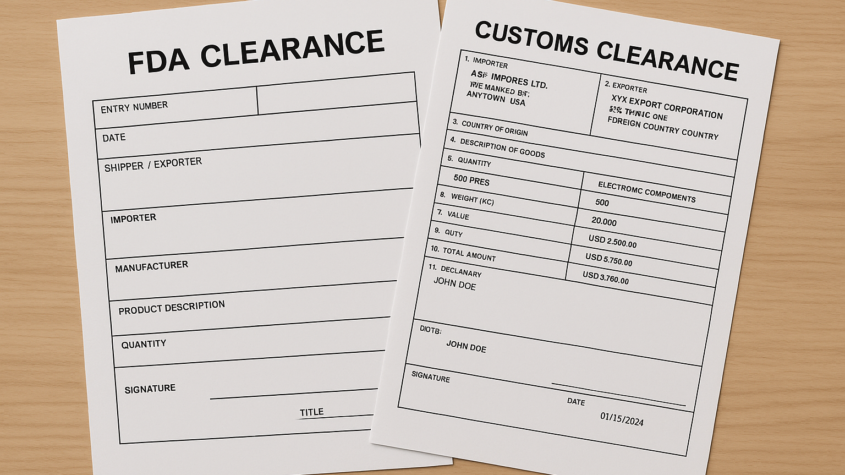
The FDA Prior Notice is a critical requirement for anyone importing food products into the United States. This notice ensures that the FDA is alerted about incoming shipments, allowing them to assess potential risks and safeguard public health. It establishes a clear communication channel between importers and regulatory authorities, helping to streamline the process and reduce delays at the border.
Understanding the specifics of FDA Prior Notice is essential for any international business involved in food exportation. Failure to comply can result in shipments being held at customs or even rejected, leading to financial losses and disruptions in supply chains.
Navigating the complexities of the FDA’s regulations may seem daunting, but being well-informed offers significant advantages. Knowing when and how to submit prior notice not only supports compliance but also fosters smoother operations in cross-border trade.
Understanding FDA Prior Notice
FDA Prior Notice is an essential requirement for the importation of food products into the United States. It involves notifying the FDA about shipments before they arrive, allowing for proper inspection and compliance.
Purpose of Prior Notice
The primary purpose of FDA Prior Notice is to ensure the safety of food products entering the U.S. market. It enables the FDA to prevent potentially harmful items from being imported.
This process allows the FDA to assess and screen shipments for compliance with food safety standards. By receiving advance notice, the agency can allocate resources effectively to inspect high-risk products.
Failure to provide prior notice can result in shipments being delayed or refused entry. This requirement helps protect public health and maintains the integrity of the food supply chain.
Legal Framework
The legal framework for FDA Prior Notice derives from the Bioterrorism Act of 2002. This act mandates that importers submit prior notice for food shipments to ensure the safety and security of the food supply.
The specific regulations governing prior notice can be found in Title 21 of the Code of Federal Regulations (CFR), Part 1.488. This section outlines the necessary information importers must provide, including shipment details and product descriptions.
Failure to comply with these regulations can lead to significant penalties. Importers must stay informed about any changes in the legal requirements to ensure ongoing compliance.
Affected Products and Entities
FDA Prior Notice applies to a wide range of food products. This includes, but is not limited to, processed foods, human and animal food, and certain dietary supplements.
Entities required to submit prior notice include food importers, carriers, and U.S. agents. Each party plays a crucial role in ensuring compliance with the regulations.
Specific exemptions exist, such as for food items intended for personal use or certain low-risk products. Understanding which products and entities are affected is critical for successful shipments into the U.S.
Compliance and Submission Process
The compliance and submission process for FDA Prior Notice is critical for ensuring that imported food and drugs meet safety regulations. Timelines, required information, and submission methods are essential for a smooth process.
Submission Timelines
Prior Notice must be submitted to the FDA at least one hour before the arrival of the shipment at U.S. ports. This allows the FDA to assess the shipment for compliance with safety standards. If the notice is submitted fewer than two hours before arrival, it may be rejected.
The FDA encourages early submissions to reduce congestion and enhance safety inspections. Furthermore, if there are any changes to the shipment, such as declaration modifications or delays, an updated prior notice is required.
To ensure compliance, importers should establish a submission timeline that incorporates potential delays in processing.
Information Requirements
The FDA mandates specific information to be submitted, which includes:
- Product description: This should specify the type of food or drug.
- Country of origin: The country where the product was produced.
- Consignee information: Including the name and address of the entity receiving the shipment.
- Ship information: Details like the vessel name and voyage number.
Additional details like the expected arrival time, quantity, and packaging type may also be required. Missing or incorrect information can lead to delays or rejections. Therefore, accuracy is crucial for ensuring swift processing.
Methods of Submission
Importers can submit Prior Notice through several methods, enhancing flexibility. The main methods include:
- Online Submission: Using the FDA’s Prior Notice System Interface (PNSI) for real-time notifications.
- EDI Submission: Electronic Data Interchange allows automated submissions through third-party software.
- Fax or Mail: Though less common, submissions can also be faxed or mailed, but these methods may cause delays.
Each method has its advantages, but online submissions are preferred for speed and efficiency. Importers should choose a method that aligns with their operational capabilities and urgency of shipment.
Recycling Drop Off Near Me: Your Guide to Local Eco-Friendly Solutions
Finding a nearby recycling dropoff location can be a crucial step in contributing to envir…










